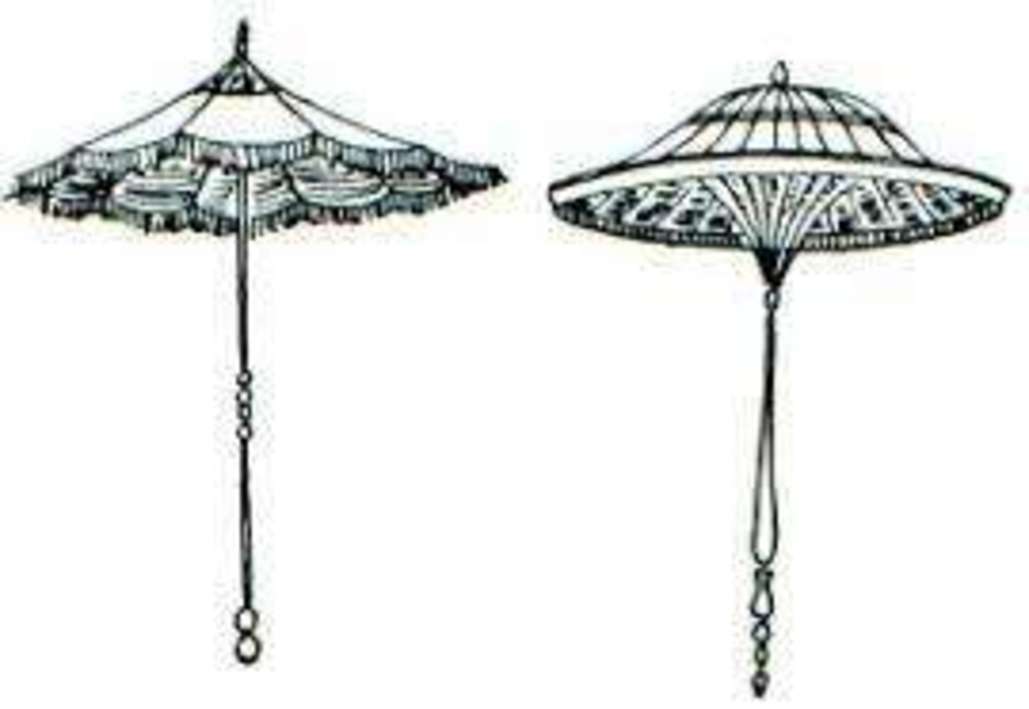Rain rain go away, come again another day. That’s the nursery rhyme we’ve all been taught, yet let’s be real - most of us would rather have rainy days than face the sweltering heat in Singapore. A major bummer, though, is when our plans get cancelled. Thankfully, there are still good things born out of this, such as - shameless plug - Culturally’s cute rain cloud GIF on Instagram! (Search “Culturally” under GIFs in your IG Stories to find this gem)

Source: Giphy
Jokes aside, the main reason why we can still go out despite the rain (especially if it’s a light drizzle) is due to one of the most wonderful inventions of all time - the umbrella. However, did you know that the first umbrella was not waterproof? Shocking.

Source: Giphy
More than 4000 years ago, the first umbrella was not meant to shelter one from the rain, but from the sun. This shouldn’t be a surprise, with its root Latin word umbra referring to shade. In fact, umbrellas were first waterproofed in China via the waxing and lacquering of paper parasols. Meanwhile, their ancient counterparts in Egypt, Assyria and Greece could not be used in rainy weather. Today, most people have conveniently switched to using hats or sunscreen to protect themselves from the sun instead. Thankfully, we still have ancient artefacts which give us a glimpse of how umbrellas used to look like back then:
Umbrellas in ancient Egypt:

Source: Viola Umbrella
Umbrellas in ancient China:

Source: China Whisper
Umbrellas in ancient Greece:

Source: Fabrics.net
At the very beginning, umbrellas were only used by the upper classes. This was due to the high cost of umbrella production, greatly limiting its usage to this small group. As such, the umbrella was viewed as a status symbol and it was eventually incorporated into various religious ceremonies.

Source: Viola Umbrella
Amongst the wealthy, a large majority of umbrella users were female. Carrying an umbrella was viewed as a trend amongst women and this deterred men from being seen with one. This gender stereotype only broke when Persian writer Jonas Hanway started using an umbrella publicly, and other men started carrying umbrellas too. Good news? Not for the cab industry - coachmen used to earn a lot of money from male passengers avoiding the rain, and this new trend led to a loss of part of their incomes.

Source: European Umbrellas
Part of the high cost of umbrella production can be attributed to its expensive materials. Materials used differed across geographical borders. In Europe, umbrellas were made of wood, whalebone, alpaca, oiled canvas, while their Egyptian counterparts used tree leaves and palm branches. Umbrellas in ancient China were made of paper and eventually leather for protection from the rain. As time progressed, steel was introduced. This made umbrella frames significantly lighter and cheaper. Today, the typical umbrella is made of plastic, wood and metal.

Even though most umbrellas today are made using the same materials, there is still a wide range of designs available. According to Heddels, the compact umbrella was invented by Hans Haupt in 1928. He was an injured war veteran who wanted to relieve himself of the burden of holding both his walking stick and umbrella simultaneously. Thanks to him, we now have adorable pocket-size umbrellas that we can keep in our bags!

Source: Jolly Chic
Aside from the typical umbrellas we see today, there are many other designs that have popped up and brought us entertainment while serving a practical purpose. (P.S. umbrella hats have actually been around since 1880. Here is a list of whackiest umbrellas for you to enjoy. It’s rainin’, rainin’.

Source: Giphy
Itching to paint your own oil-paper umbrella after reading this article? We have just the thing for you, our friends in Shanghai! Remember to share your lovely creations with us on social media using the #DoItWithCulturally hashtag.

Source: Sip & Paint
• • •

At Culturally, we offer customised hands-on cultural experiences for you and your loved ones to enjoy and have fun whilst learning about other cultures!